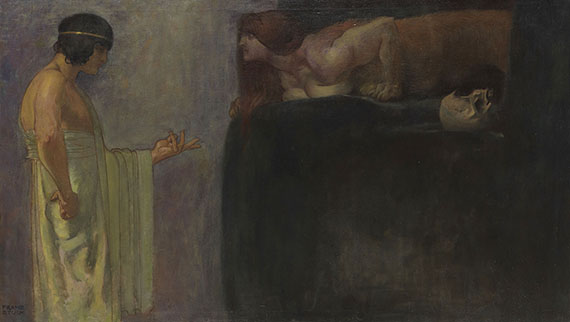Dictionary


Italian Late Baroque
In the 18th century, the situation in Italy had changed. The influence of external powers, particularly Austria, increased, and Rome lost its status as the most important artistic city in Italy. Thus, the high baroque style had the greatest resonance in Rome. This is exemplified in the work of sculptor Pietro Bracci (1700-73). Neapolitan and Venetian painting gained in importance. The Venetian school was led by Giuseppe Maria Crespi (1665-1747) from Bologna, who created powerful works which combined unique a chiaroscuro style with Carracci-esque composition. In Roman late Baroque painting, the emphasis moved from wall and ceiling to altar painting. Key exponents included the distinctive Carracci follower, Carlo Maratta (1625-1713). Painting was also influenced by the Venetian style, which was represented in Rome by Francesco Trevisani. Late Baroque art in Rome was also influenced by local artists such as Maratta’s student Marco Benefial (1684-1764). The most important master of late Baroque and pre-Classicist art was, however, Pompeo Girolamo Batoni (1708-87), whose work remained highly popular in the 18th and 19th centuries. One of his key works was the much-copied "Suffering Magdalena" (formerly in the Gemäldegalerie Dresden). In addition to local artists, a number of foreign artists and art theorists worked in Rome in the 18th century, including the founding fathers of Classicism Anton Raphael Mengs (1728-79) and Johann Joachim Winckelmann (1717-68).
In the 18th century, the situation in Italy had changed. The influence of external powers, particularly Austria, increased, and Rome lost its status as the most important artistic city in Italy. Thus, the high baroque style had the greatest resonance in Rome. This is exemplified in the work of sculptor Pietro Bracci (1700-73). Neapolitan and Venetian painting gained in importance. The Venetian school was led by Giuseppe Maria Crespi (1665-1747) from Bologna, who created powerful works which combined unique a chiaroscuro style with Carracci-esque composition. In Roman late Baroque painting, the emphasis moved from wall and ceiling to altar painting. Key exponents included the distinctive Carracci follower, Carlo Maratta (1625-1713). Painting was also influenced by the Venetian style, which was represented in Rome by Francesco Trevisani. Late Baroque art in Rome was also influenced by local artists such as Maratta’s student Marco Benefial (1684-1764). The most important master of late Baroque and pre-Classicist art was, however, Pompeo Girolamo Batoni (1708-87), whose work remained highly popular in the 18th and 19th centuries. One of his key works was the much-copied "Suffering Magdalena" (formerly in the Gemäldegalerie Dresden). In addition to local artists, a number of foreign artists and art theorists worked in Rome in the 18th century, including the founding fathers of Classicism Anton Raphael Mengs (1728-79) and Johann Joachim Winckelmann (1717-68).
Offers




